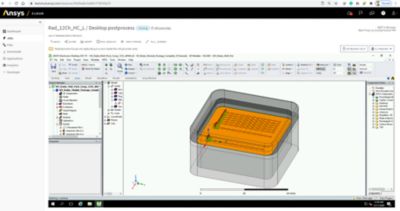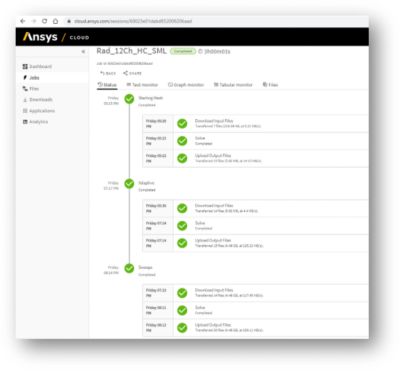-
-
Access Free Student Software
Ansys empowers the next generation of engineers
Students get free access to world-class simulation software.
-
Connect with Ansys Now!
Design your future
Connect with Ansys to explore how simulation can power your next breakthrough.
Countries & Regions
Free Trials
Products & Services
Learn
About
Back
Products & Services
Back
Learn
Ansys empowers the next generation of engineers
Students get free access to world-class simulation software.
Back
About
Design your future
Connect with Ansys to explore how simulation can power your next breakthrough.
Free Trials
ANSYS BLOG
March 26, 2021
Get the Best Cloud Cost-Performance Ratio
Ansys Cloud provides engineers with quick and easy access to massive computer resources hosted on Microsoft Azure. By accessing Ansys Electronics Desktop (AEDT), engineers can solve larger designs than ever before and speed their time to market. This increased speed comes with a tradeoff though, measured by time to solution and amount of compute required. CFOs and design managers want to contain costs and optimize their design teams’ use of cloud resources. Ansys now provides an easy way to do just that.
Improved Cloud submission in AEDT provides customers the flexibility to strategically tailor desired resources efficiently at different stages during the simulation process, providing the best performance for time and cost. Thanks to this improved submission on the cloud, it is now possible for a customer to select a combination of hardware configurations at the initial meshing, adaptive meshing and frequency sweep stages.
Balance Simulation Time and Costs
The recently enhanced AEDT submission tool enables designers to tailor resources for each step in the electromagnetic simulation process, providing the best balance between Cloud computing solve time and costs. The new dynamic-sizing HPC workflow offers AEDT users more flexibility and control over price and performance, and will ease an organization’s transition from legacy on-premise desktops to optimally run cloud resources.
Cloud high-performance computing (HPC) configurations can be selected from the Azure virtual machines currently supported in AEDT. As of today, these virtual machines are called “H16mr” and “HC” in Ansys Cloud.
Let’s compare three setups to run a typical Ansys HFSS radar simulation:
- A small (8-CPU) virtual machine
- A single-size cloud instance
- A dynamically sized and cost-optimized cloud configuration.
Get Results 4X Faster and 41% Cheaper
For our example, Ansys HFSS has been used to design a typical automotive radar module equipped with eight series-fed patch columns operating at 77 GHz. We setup the simulation in an AEDT session via the new in-browser interactive session on Ansys Cloud for post-processing operations.
A 77 GHz Automotive Radar Module running in Ansys AEDT and Ansys Cloud in Browser.
We ran a test of the new improved submission process on Ansys Cloud to optimize the job with the best hardware configurations at each step, maintaining a fast solving time but also a controlled consumption of Ansys Cloud Currency.
To establish the baseline, this problem was first solved on a small 8-CPU core virtual machine with 64 GB of RAM, and it took 12 hours and 7 minutes to complete.
Next, we solved the same model using a single-step Ansys Cloud submission and the “H16mr large” configuration (128 cores for all steps of the simulation), which sped up the simulation by 4.72X to achieve the same results in 2 hours and 35 minutes.
Switching to the new cost-optimized submission workflow in Ansys Cloud, we tested the two-step submission process to compare cost and performance. We chose the same product family (H16mr) and used the “medium” configuration (32 cores) for the meshing process and the “large” configuration (128 cores) for the frequency sweep. This resulted in a 41% cost savings over the single-step H16mr configuration and resulted in a total solve time of 2 hours and 56 minutes, which is just slightly higher than the single-step configuration and still 4.13X faster than the baseline.
The improved Ansys Cloud submission functionality.
Right-Size Your Simulations on the Cloud
This comparison of single-step and two-step results demonstrates the great cost savings possible by right-sizing the HPC configurations within a single job submission.
Thanks to this unique new feature in Ansys Cloud for AEDT, our customers can now make much more informed tradeoffs between cost and performance. These easy-to-use controls will enable companies to confidently make the transition from on-premises computing to cloud computing while realizing all the advantages that come with it.
Want to learn more? Watch the webinar: Boosting AEDT Simulation with Ansys Cloud.


